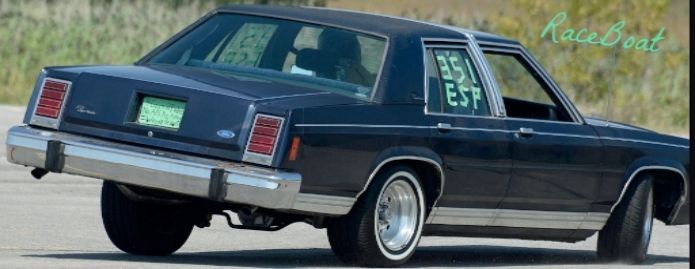Ive been reading a lot about these 3.55 rear ends lately, how they improve performance (specially with the HO, with i plan on converting to) and fuel economy, but i certainly dont know the down and dirty. Im hoping someone can explain in detail what its all about, how do i know what im running now (more than likely stock), do i rebuild, steal from junker, buy new, etc etc?
 |
Announcement
Collapse
No announcement yet.
Differential gears ratios for dummys
Collapse
X
-
1. what do all these numbers mean?
(copied and pasted from a good answer elsewhere)
"It's the ratio of how many times the drive shaft turns to how many times the axle turns and is set up by choosing how many teeth are on the ring and pinion gears.
Bottom line, the higher the ratio, the more power (Torque actually) at the rear wheels, also the higher your engine runs (RPM's) and the poorer your gas mileage.
btw - higher ratio is reffered to as lower gearing (geared down) and lower ratio is reffered to as higher gearing ... nice and confusing eh?
example, with a 4.10 gear set, the ratio is 4.10 to 1 so for every 4.1turns of the driveshaft, the rear axle will be turned one time and you will have a torque advantage of 4.1x
On the flip side for every say 10 turns of the wheels, your drive shaft will turn 41 times & your engine has to turn 41 times in high gear (not overdrive).
With a 3.70 gear, your Torque advantage is 3.7 times but now if your wheels turn 10 times, your drive shaft and engine will only turn 37 times. As with everything auto, always a trade off. "
To add something more specific to your car: Most base model box era panthers got 2.73 rear gears stock. Some with towing packages or similar got 3.27, 3.55, or 3.08. Generally 3.55 is considered the lowest (numerically highest) gear you can run without losing major fuel economy on the highway with a 5.0. Some of the guys with 4.6's will say that 3.73 or even 4.10's don't hurt mileage, but keep in mind they have an engine that can rev more than 1000rpm higher than yours, so the extra RPM's hurt them less.
2. how do I know what I'm running now?
This is the easiest. Get under the car, look at the little metal dogtag sort of thing hanging off the cover of your diff. It will have a series of numbers like "2L73" or "3 55" or "3L27". If there's an L you have a limited slip. If you have a space, it's an 'open' diff. Obviously, the numbers indicate your gear ratio. And both of your cars have 28 spline, not 31 or 33 spline axles.
If you're not sure whether you have a limited slip, get both rear wheels in the air, put it in neutral, and spin one tire. If the tire on the other side spins the opposite way, you have an 'open' diff. If it spins the same direction as the tire you spun, you have a locker. And there will be some free-play either way before the other tire starts spinning, this is normal.
3. What should I actually change if I want to change my gear ratios?
the bare minimum in terms of parts costs would be a used ring and pinion (the main gearset) from another 8.8" rear end car. You can get cheap 3.27 and 3.55 gears people have pulled out of mustangs for 50-125 bucks all day long on craigslist and forums. Inspection is fairly easy, make sure there is no pitting, chipping, or deep grooving anywhere that looks like it gets metal to metal contact. The downside is you will have to pull the axle more or less completely apart, and there are shims and torque specs and tooth patterns and such to be aware of. There are lots of good 'how to install gears in an 8.8" rear end' articles out there so I'll just recommend you search the site or google. At this point you can also put in a limited slip setup, which can be bought new or used. Whether you've got one already, or are buying used, now is the time to buy a new clutch kit for your limited slip. 'Trak-lok clutch kit' or similar will bring you to these. You will also want to inspect your axles themselves for wear/pitting, and probably replace your bearings and seals while it's all apart.
The seemingly more involved, but sometimes quicker way is to swap the whole damned axle. An axle from a box-era panther will more or less be bolt-in. An axle from an 'aero' car (92-97, 90 for lincolns) will need some parking brake changes, and brake valving changes, but is close to bolt in. The advantage with aero axles is they're a little wider and come with disc brakes. These end up being potentially quicker because it's less than a dozen bolts with an impact gun instead of a lot of finesse work with seals, torque specs, backlash, dial indicators, etc. Pick an axle with the ratio you want and bolt it in. The catch is that you're probably sourcing from a junk/parts car, so it's got a real chance of having hidden issues.
85 4 door 351 Civi Crown Victoria - Summer daily driver, sleeper in the making, and wildly inappropriate autocross machine
160KMs 600cfm holley, shorty headers, 2.5" catted exhaust, 255/295 tires, cop shocks, cop swaybars, underdrive pulley, 2.73L gears.
waiting for install: 3.27's, Poly bushings, boxed rear arms, 2500 stall converter, ported e7's, etc
06 Mazda 3 hatch 2.3L 5AT (winter beater that cost more than my summer car)
Comment